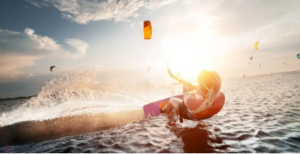The central banks dominate home loan lending in New Zealand but aren’t the only option for borrowers. Non-bank lenders can provide a more flexible solution for borrowers who may not tick all the boxes for mainstream lenders.
Increasingly, people are considering short-term property finance and bridging loans as an alternative to traditional mortgage funding. A qualified mortgage broker can help unravel the complexities of using a non-bank lender. For more information about the non bank lenders NZ, click here.
Flexibility
 As a result of the banks’ overcautious approach to lending, many New Zealanders have turned to non-bank lenders for their home loans. Although still regulated, these finance companies offer a more flexible loan application process, often facilitated through digital platforms.
As a result of the banks’ overcautious approach to lending, many New Zealanders have turned to non-bank lenders for their home loans. Although still regulated, these finance companies offer a more flexible loan application process, often facilitated through digital platforms.
The flexible lending criteria offered by these lenders is a defining characteristic. This is particularly true regarding a property’s loan-to-value ratio (LVR). Many non-bank lenders are willing to lend at a higher LVR than the banks, which can be a huge advantage for home buyers and property investors who cannot meet the rigid requirements set by mainstream banks.
In addition, non-bank lenders can often provide competitive mortgage rates and fees and offer specialist loan products like short-term lending. This makes them an invaluable tool for the modern mortgage adviser, especially given the growing diversity in income sources and credit profiles that more and more New Zealanders are experiencing.
Lower interest rates
Non-bank lenders have increased competition in the New Zealand mortgage industry and given Kiwis more options on their journey to property ownership. They have also helped many Kiwis to whom the banks said no to get onto the property ladder. For more information about the non bank lenders NZ, click here.
Non-bank lenders offer a more comprehensive range of lending products than banks, including home, personal, and auto loans. They can provide solutions for unique borrowing situations, such as being self-employed or receiving income from overseas, which may negatively impact a bank application.
In addition, they offer interest rates that are often lower than banks. They also provide debt consolidation, which allows you to take out a new loan to repay your other debts, merging them into one payment and improving your credit rating. This can be particularly useful for borrowers with various debts from different lenders. Non-bank lenders have more flexible lending policies than banks but must still follow responsible lending rules.
Higher LVR
As the mainstream banks tighten their lending criteria, people are looking for other options. Non-bank lender funding is becoming increasingly popular. With a focus on short and long-term property finance, they can offer more flexibility than the banks. This is particularly important for self-employed New Zealanders or those who have overseas income that may not meet the requirements of a mainstream bank application.
Non-bank lenders in New Zealand can also lend at higher LVRs than the banks. This can benefit first-home buyers and property investors who cannot fit the banking criteria. Some lenders offer up to 95% LVR on a residential loan or investment property.
Many Kiwis need a mortgage from the non-bank lending industry after being rejected by a mainstream bank due to a relationship breakdown, reduced hours, redundancy or business failure. A specialist loan is often an excellent option for these borrowers, as they can secure a loan quickly with minimal requirements. For more information about the non bank lenders NZ, click here.
Specialist loans
Although the big four banks dominate New Zealand’s mortgage industry, they aren’t always the best choice for all borrowers. As lenders have tightened their responsible lending guidelines, more and more borrowers are turning to non-bank lenders to meet their financial needs. This might include obtaining a mortgage where a central bank has declined them or refinancing from their current loan.
Non-bank lenders often offer greater flexibility and faster approval processes. They also provide specialist loans suited to specific borrowers, such as self-employed borrowers and those who receive income from overseas sources.
Understanding the differences between non-bank and traditional bank lenders empowers borrowers to make informed borrowing decisions. Whether you prioritise flexibility and quicker approvals or require a more stable funding structure, Global Pacific Capital can help you navigate this intricate lending landscape to find the right lender for your unique circumstances. Contact us today to discuss your options.
 Wind is the cornerstone of
Wind is the cornerstone of